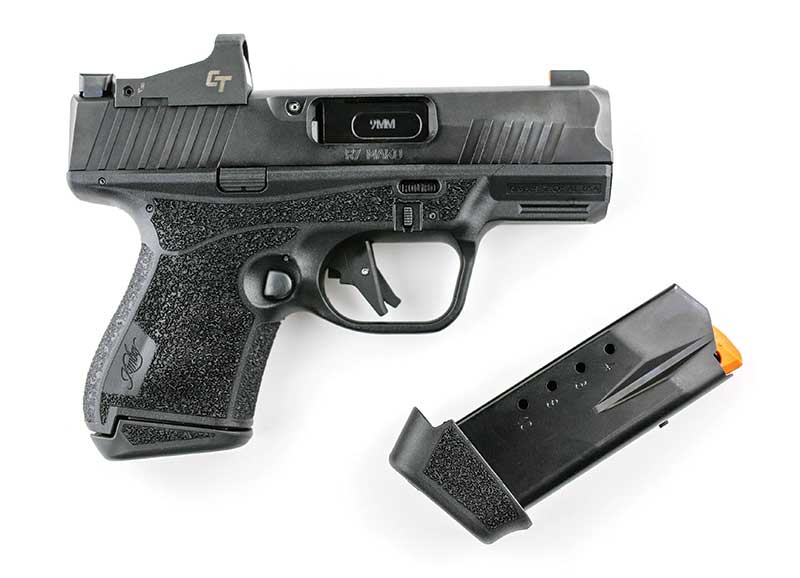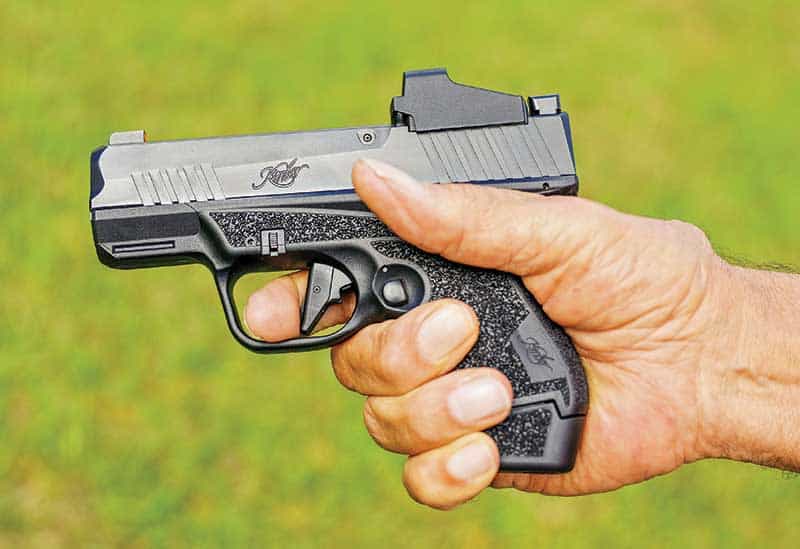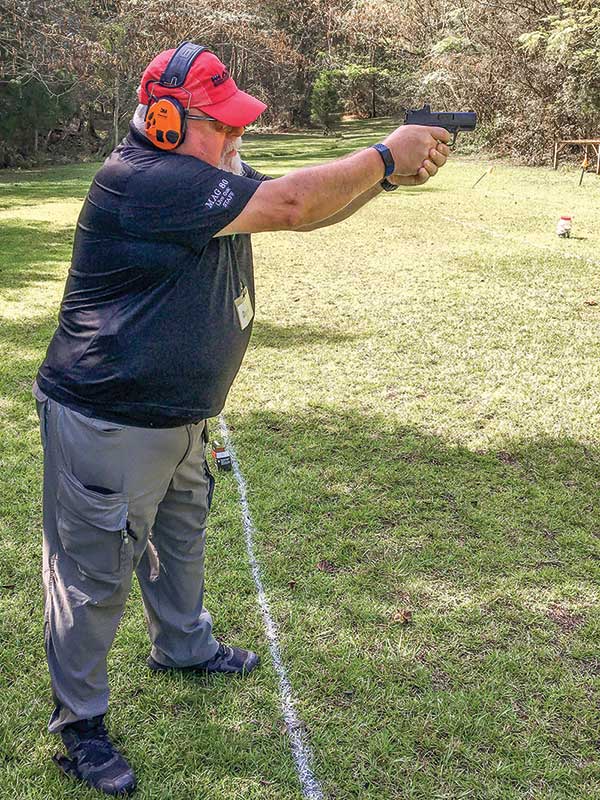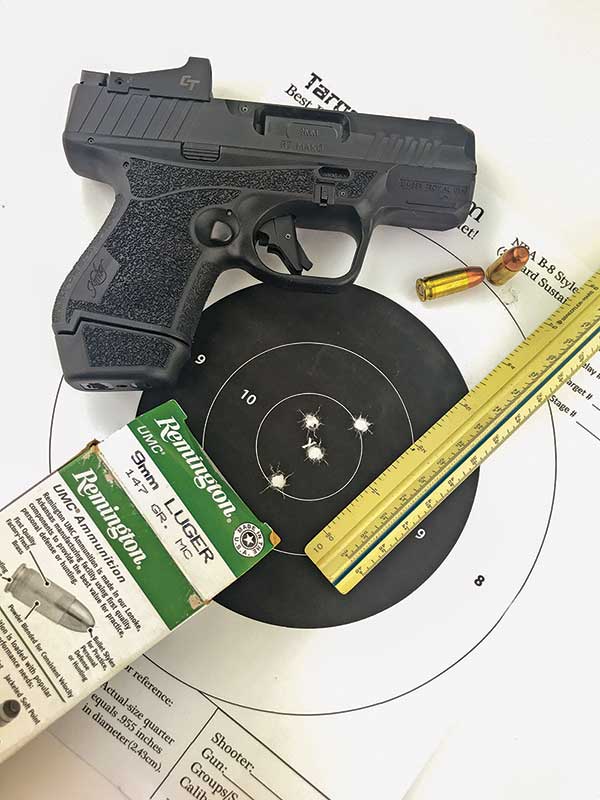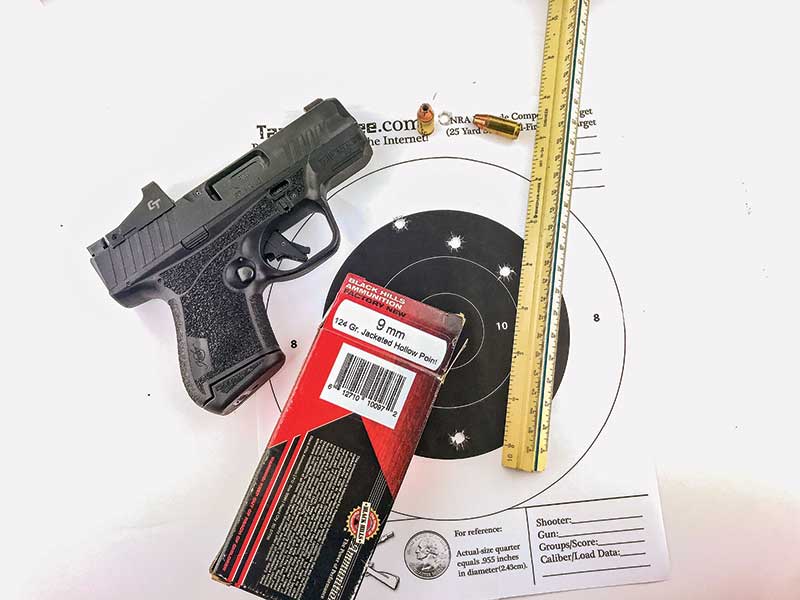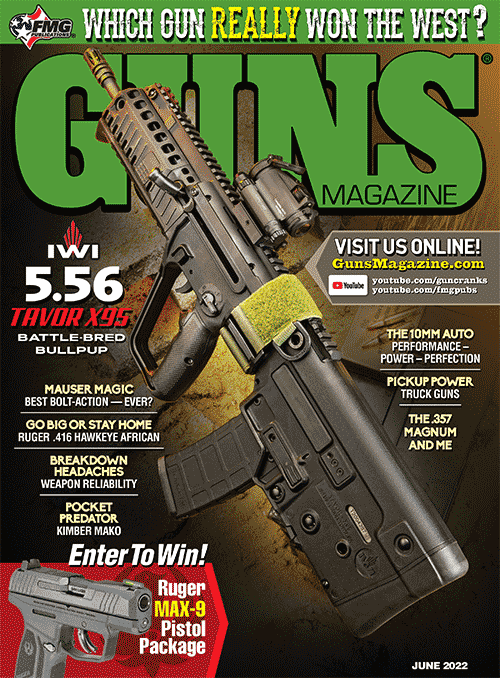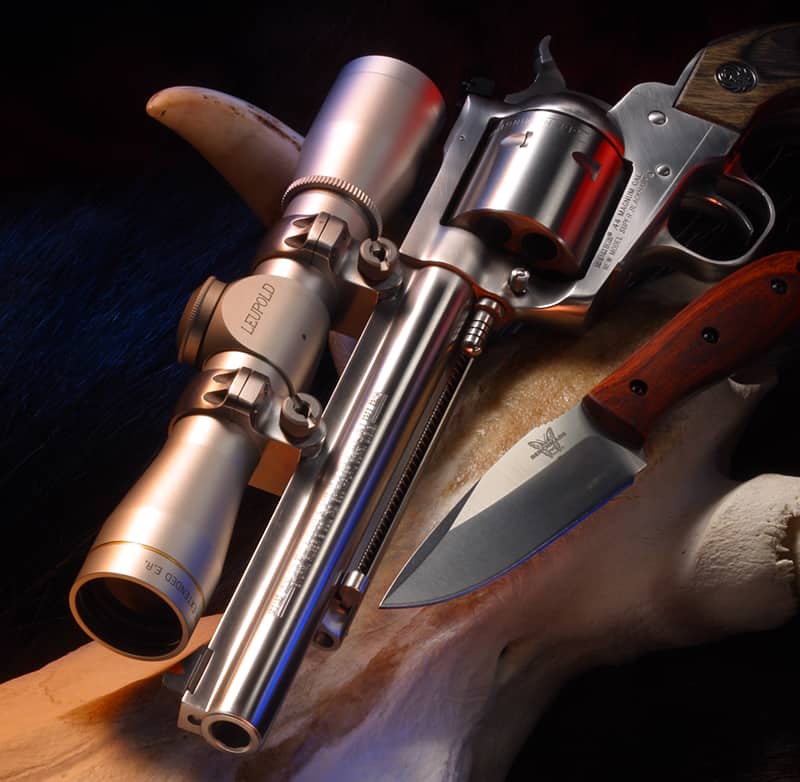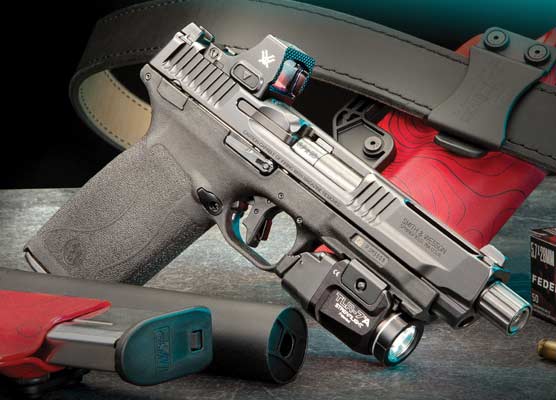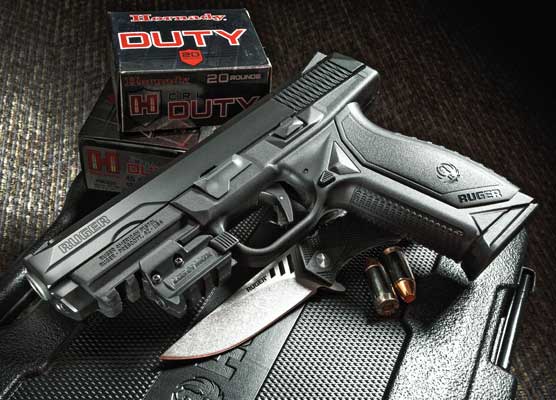The Mako Attacks
Small pistol with a big bite!
With strong input from pistol champion Phil Strader, the SIG P365 created a new genre of defensive handgun: small and light, polymer frame and striker fired, pocket-sized and holding 11 rounds or more of 9mm ammunition. It was a sea change in concealed carry handgun design and other manufacturers introduced competing models in what looked like a feeding frenzy. The GLOCK slimlines, G48 and G43X. The Springfield Hellcat, which upped the round-count ante. The Smith & Wesson Shield Plus, the Ruger Max-9, the Taurus GX4 and now the Kimber Mako.
Amidst The Feeding Frenzy
Amidst the feeding frenzy of pistol manufacturers salivating to dominate this market, the Mako cuts the water as any shark would with its dorsal fin being the first signal of its presence. The dorsal fin on our test sample, serial number R00180, is right there on its spine: a Crimson Trace red dot sight. Underlying it are some excellent backup iron sights. The rear has two tritium dots and a front sight needing some explanation. The front is in the form of a Patridge-style post, big enough to see under stress and easy to align with the big U-notch rear. The front sight is fitted with a big old orange dot that catches the eye in daylight or illuminated indoor environments. And, in the center of the big orange ball is a little green tritium bulb which, in pitch darkness, aligns between the two larger ones on the rear sight.
While I prefer the bigger night sight lamp to be on the front, it’s not hard to tell the little one is on the front and the bigger ones are on the back. With the test gun, which had the optional RDS (Red Dot Sight), the three green dots aligned just under the big red one. The point is, if you’re “retro” and don’t have the optical sight up above, you’ll be able to tell the front from the rear and not misalign the three dots and shoot to the side.
Inevitably, someone will say, “If you can’t see your sights you can’t see to identify your target,” to which I will reply, “If there’s a humanoid shape in the dark that screams ‘I’ll kill you, #@*%!’ and you hear a shot and see an orange fireball, your shadowy target is identified and it would be awfully nice if you could index your sights upon it.”
In The Hand
I was very pleased with the grip treatment. Grip shape has a curve low on the backstrap locking into the hollow of my palm much like the Baby GLOCKs such as the G26, a feature letting people like me shoot them as well as longer barreled guns in the same caliber out to about 25 yards. The stippling seemed “Momma Bear just right,” not chewing up the hand in extended firing but preventing any shift in the gun hand. Not having a holster for it, I didn’t give it a concealed carry test but the stippling seems as if it would only chafe if carried tight against bare skin.
In The Field
Because many defensive uses of the handgun involve an attacker right on top of the defender, we have to remember pressing the muzzle of most semi-automatic pistols against the body of the homicidal attacker can push the barrel/slide assembly out of battery and prevent the gun from firing. The Kimber Mako, I’m happy to report, has a recoil spring guide that comes forward far enough to prevent this from happening. I for one think this is a big advantage in auto pistol design and am continually confounded why gun manufacturers who have this stand-off feature don’t advertise its life-saving potential more than they do.
On The Range
The Kimber Mako is truly ambidextrous — dual magazine release buttons and slide lock/slide release levers. This isn’t just for our southpaw contingent. Any right-handed shooter might have to fire “weak hand only” in an emergency, and the ambi mag release allows even the “northpaw” to remove the index finger from the trigger during the reload process (a safety bonus point) and probably dump the empty mag faster than shifting the hand to allow the right thumb to do it. If you are wounded and have to do a one-handed reload, ambidextrous slide release levers make this faster. All good in my opinion.
When you take a self-defense gun out of the box, you expect it to shoot to where the sights are aligned. There was good news and bad news here with our test Mako. The iron sights were dead on, but the red dot was nowhere near co-witnessed with the irons. Test team member David Rodgers had to take some time to adjust the dot before it “shot where it looked.”
A note to gun manufacturers who sell handguns with red dot sights: Please sight the darn things in before you send them to consumers who buy defense guns for life-threatening emergencies! It is to Kimber’s credit they did it with the iron sights; I wish they had done the same with the optic.
Trigger pull? The Lyman digital trigger gauge found the trendy flat-faced trigger to average 5.04 lbs. average from the toe of the trigger, the bottom tip and 5.325 lbs. from the center where most of our trigger fingers will be positioned. This is a bit light in a world where striker-fired pistols are measured by the dominant gun, the GLOCK, whose measurement is a factory-stated 5.5 lbs. on standard self-defense models.
All on the test crew noted “creep” in the take-up of the pull, that is, little catch points that felt like “fits and starts” in slow fire. We also noted a bit of it when the trigger “hit the wall,” that is, reached the point of firm resistance to the trigger finger before the shot discharged. There was also some “backlash,” or rearward movement of the trigger after the striker released and the shot was on its way. This was much less palpable when firing rapidly, however. It did not have much deleterious effect on accuracy, however, as we’re about to see.
Accuracy
If it doesn’t have the optical sight, you can carry your Kimber Mako in a capacious trouser pocket. Some see these guns, viably, as pocket pistols. There is a strange belief in the gun world pocket pistols should only be tested at 7 yards or so.
Unfortunately, the pocket pistol will have to do the service pistol’s job at 25 yards if this is how things go down, so I still test such guns from that distance. Standard protocol here: Caldwell Matrix Rest on a concrete bench and five-shot groups measured once overall. This shows what the pistol can do under perfect conditions in human hands and again for the best three hits.
We tested with the three most common 9mm Luger bullet weights. Our test Mako turned out to always throw the first shot very high and a little right, due to the fact semiautomatic firearms don’t always go into the exact-same “battery” (alignment of firing parts) when hand-cycled as when automatically-cycled during recoil.
Our 115-grain load was one most widely available in many places during the current “ammo drought,” CCI Blazer Brass full metal jacket. With the first high shot the total group at 25 yards was 4.60″, all in the black of a B8 NRA “bullseye” target, but the best three were in 1.60″.
Our 124-grain load was Black Hills jacketed hollowpoint, a round so accurate I’ve seen U.S. military pistol teams issue it to their elite teams for the National Championships at Camp Perry. This little carry Kimber didn’t like it as much as the armed services’ accurized Berettas, with five shots in 7.30″ at 25 yards counting the first high shot, 5.0″ for the next four and 2.65″ for the best three.
The Kimber Mako hit its sweet spot with 147-grain subsonic 9mm, a load created for sniper-grade accuracy with MP5SF submachineguns of Special Forces back in the 1980s by Winchester, who appropriately named the round “OSM” for Olin Super Match. The Remington-UMC jacketed truncated version we shot put all five shots in 4.95″, with the last four in 1.60″ and the best three in a most impressive nine-tenths of one inch, dead center in the target.
In Conclusion
The ability to deliver a press-contact shot is a huge tactical advantage, and the Mako has it. Our test gun went hundreds of rounds in many hands with flawless reliability. We liked that the iron sights came out of the factory spot-on for point of aim/point of impact. We were reminded not all pistol/optical sight packages come out of the box shooting where they looked. Our test crew overall liked it and team member Robby Harris said he’d probably buy one. If you are going to be swimming with the sharks and want a maximum-capacity pocket-size 9mm, the Kimber Mako should be on your sonar screen.
MSRP: $799 with optic
